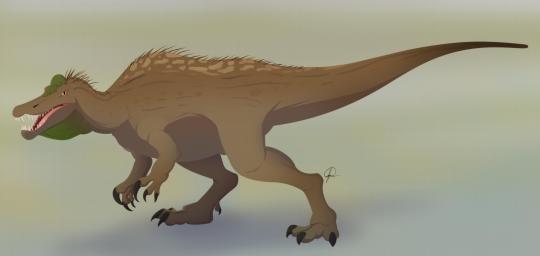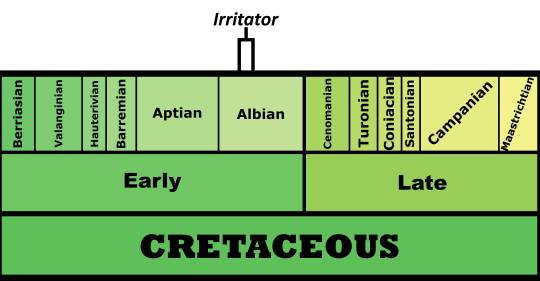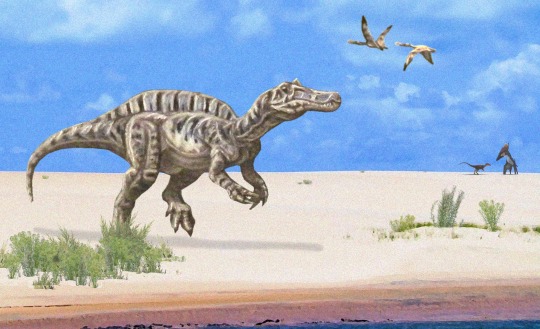#palarchive
Text

#the palestinian museum digital archive#palarchive#palestine#free palestine#from the river to the sea palestine will be free
46 notes
·
View notes
Text



#design for palestine#.png#been scrolling through palarchive and I wanted to make some posters tbh.#I have like 70 bucks worth of printing credits left at my college umm next week i will see if i can print out some more stuff#its really funy though the chancellor sent out an email saying not to use school related accounts to organize and promote terrorism#like okayyy
403 notes
·
View notes
Note
Hello. I just got in contact with a group in Seattle making "solidarity" art and I wanted to know what that means to you. Is acknowledging the horrors in Gaza the most effective way to make Palestinians feel seen? Or is there more value in incorporating symbols of resilience, like olive trees, watermelons, and spoons?
By acknowledging, I mean create something enraging, like depicting the drastically different living conditions on the Palestinian and Israeli sides of the border wall. Healthy people in open farmland on one side and a warzone on the other. Or is it better to include a little hope? One idea I've been mulling over is painting a Palestinian child and IDF solider in a way that suggests David and Goliath (I found out the most common charge against Palestinian youths is throwing rocks). Another is Gaza as a torn tapestry with Mother Palestine sewing over and repairing the rips with tatreez.
I guess the real question is: Do you think most Palestinians would appreciate an attempt at comfort, or is it better to simply grieve with them?
Thank you so much for sending this in. My personal take is the most inspiring imagery are symbols of resistance. For example, this poster is embedded in many Palestinians' minds (click) as a prime example of resistance. I love images of olives and flowers not because they're soft, but because they represent life to me. Something I also adore is Rafeef Ziadah's poem "We Teach Life, Sir" and Samah Fadil's "Then, A Palestinian was Born," as words that speak to me as core parts of Palestinian resistance.
I think you can definitely mix strength and grief, or comfort and grief together when talking about Palestine. Refaat said it best: "the most dangerous thing I have is an expo marker but if an Israeli soldier were to come to my house I would use that expo marker and throw it at them." To us, the idea that we have to resist is grief and the grief moves us to resist. I personally really love the david and golaith imagery because it reminds me of the poster below.
I guess this is all to say that you can mix them together, the grief of seeing people dying and the strength of resistance against the oppression. What's the most effective thing is portraying the truth: Israel kills and Palestine resists.
Here is the image. I highly encourage everyone to print out this poster and post it around town if you're able. Or even post it around social media if you can, and link back to palarchive so that people can see there's so much palestinian art and history that they can explore.

784 notes
·
View notes
Text
Georgia man sentenced to prison for assaulting officer, hotel guests while naked, high on drugs

Naked Georgia Man Sentenced After Assaulting Multiple People, Including Police Officer
In a bizarre incident that unfolded in Acworth, Georgia, a 37-year-old man named Kelly Holcomb has been found guilty of assaulting multiple individuals, including a police officer, all while in a disrobed and drug-induced state. Holcomb's actions on that fateful day have resulted in a significant legal consequence.
On December 17, 2022, Kelly Holcomb was accused of forcibly entering a room at the Deerfield Lodge in Acworth, Georgia. Within the room, he engaged in acts of violence, striking a man and a woman in the face.
Reports poured in about a naked individual wreaking havoc and attacking people. In response, Acworth Police Officer Taneisha Palarche was dispatched to conduct a welfare check on the situation. However, her encounter with Holcomb took a violent turn. Instead of calming down, he launched further attacks, this time targeting another person and the police officer herself.
Officer Eric Mistretta recounted, "He was naked and believed to be intoxicated on multiple different types of drugs." The situation escalated as Holcomb knocked out one of Palarche's front teeth, strangled her, and attempted to gouge her eyes out with his thumbs. Local residents intervened, providing crucial assistance to free the beleaguered officer.
Additional police officers soon arrived at the scene, but Holcomb's aggression continued as he kicked one of them. Despite their efforts to restrain him and the use of a Taser, they were unable to subdue him.
Ultimately, officers managed to apprehend Holcomb, who was subsequently transported to a hospital for evaluation. Following his release from the hospital, he was booked into jail.
While officers struggled to contain the situation, Metro EMS arrived on the scene to administer a sedative to calm Holcomb down, as recounted by Officer Mistretta.
In the legal aftermath, a Cobb County jury found Holcomb guilty on various charges, including aggravated battery on a peace officer, aggravated assault on a peace officer, aggravated battery, aggravated assault, obstruction of an officer, burglary in the first degree, and misdemeanor battery. During the trial, Holcomb admitted to having used methamphetamine before the assault.
Cobb County Assistant District Attorney Nolan Slifko remarked, "I'm thankful for the bystanders that helped Officer Palarche and the other victims in this case. This case shows the dangers of drug use and the harmful consequences it has not just for the user but the individuals surrounding them."
The verdict came with a significant consequence. Holcomb has been sentenced to 20 years, with the first 15 years to be served in prison. During the sentencing, Judge Jason D. Marbutt delivered a stern message, stating, "Your bad decisions have led us here," and ordered Holcomb to have no contact with the victims.
Read the full article
0 notes
Link
[ad_1] A Georgia man found guilty of assaulting multiple people, including a police officer, while he was naked and high on drugs has been sentenced.Kelly Holcomb, 37, was accused of entering a Deerfield Lodge room in Acworth, Georgia, on December 17 and punching a man and a woman in the face.Police received reports of a naked man running around attacking people, and Acworth Police Officer Taneisha Palarche was the first to respond to the room for a welfare check, according to Fox 5 Atlanta. Palarche approached Holcomb and attempted to calm him down, but instead, he attacked another person before then attacking the officer."He was naked and believed to be intoxicated on multiple different types of drugs," Officer Eric Mistretta said after the incident last year.NAKED GEORGIA MAN ALLEGEDLY ASSAULTS HOTEL GUESTS, POLICE OFFICER WHILE ‘HIGH ON DRUGS’ Kelly Holcomb, 37, was accused of entering a Deerfield Lodge room in Acworth, Georgia, on December 17 and attacking people. (Acworth Police Department)Holcomb knocked out one of Palarche's front teeth, strangled her and attempted to gouge her eyes out with his thumbs, police said. Some residents reportedly tried to distract the man while one resident helped free the officer.Back-up officers eventually arrived, and Holcomb kicked one of them. The officers attempted to restrain him and used a Taser, but their efforts were unsuccessful.Officers were ultimately able to arrest Holcomb, who was then transported to a hospital. He was later booked into jail after his release from the hospital."While officers were trying to restrain the suspect Metro EMS arrived at the scene to assist and were able to administer a sedative to calm Holcomb down," Mistretta said.FORMER FULTON COUNTY JAIL OFFICER INDICTED FOR ALLEGEDLY USING EXCESSIVE FORCE WITH DETAINEE Kelly Holcomb was arrested and transported to a hospital. He was later booked into jail after his release from the hospital. (Acworth Police)A Cobb County jury found Holcomb guilty of one count of aggravated battery on a peace officer, one count of aggravated assault on a peace officer, two counts of aggravated battery, one count of aggravated assault, two counts of obstruction of an officer, one count of burglary in the first degree and one count of misdemeanor battery.Holcomb admitted during the trial to having smoked methamphetamine prior to the assault.CLICK HERE TO GET THE FOX NEWS APP"I’m thankful for the bystanders that helped Officer Palarche and the other victims in this case. This case shows the dangers of drug use and the harmful consequences it has not just for the user but the individuals surrounding them." Cobb County Assistant District Attorney Nolan Slifko said in a statement to Fox 5 Atlanta.Holcomb was sentenced to 20 years with the first 15 years to be served in prison."Your bad decisions have led us here," Judge Jason D. Marbutt said during sentencing, according to WSB-TV. The judge ordered Holcomb to have no contact with the victims. [ad_2]
0 notes
Text
Irritator challengeri

By José Carlos Cortés
Etymology: The One That Irritated
First Described By: Martill et al., 1996
Classification: Dinosauromorpha, Dinosauriformes, Dracohors, Dinosauria, Saurischia, Eusaurischia, Theropoda, Neotheropoda, Averostra, Tetanurae, Orionides, Megalosauroidea, Megalosauria, Spinosauridae, Spinosaurinae
Status: Extinct
Time and Place: Between 110 and 108 million years ago, in the Albian of the Early Cretaceous


Irritator is known from the Romualdo Member of the Santana Formation in Brazil

Physical Description: Irritator was a Spinosaurid, so the weird crocodile-mimicking theropods that roamed the Cretaceous landscape across the Southern hemisphere (and some of Europe). Irritator, however, is not known from very much material, despite having loads written about it. It was one of the smaller members of the Spinosaur group, only about 7.5 meters long and not weigh more than one tonne - which may actually indicate it could have still had some sort of fluffy integument, though this still seems unlikely based on its ecology. As a Spinosaur, Irritator would have been fairly bulky, with a long and vaguely crocodilian skull. Its skull also featured a long thin crest going from the midline to the eye, where it flattened into a bulge - this was probably some sort of display structure. Little is known of the rest of its skeleton, but it is known to have had a long and well-clawed hand. It probably had some sort of sail on its back, but it probably was a shorter one, and whether or not its legs were a normal size is unknown.

By Alexander Vieira, CC BY-SA 4.0 (Irritator is on the far right, in green)
Diet: Irritator would have mainly fed upon fish and other aquatic organisms.
Behavior: Irritator, being a Spinosaur, spent most of its time in the water, swimming about and searching for food. Since it was rather small, it would have been able to fit in smaller streams of water than most of its other relatives. Though, since it probably still had fairly decent legs, it also would have spent a good amount of time on the land, surveying the shore for food and seeking out prey. Its long snout would then be used to grab fish and other animals from the water, using the lightweight instrument to grab food it might not be able to reach otherwise. While swimming, it would be able to use that snout to reach even more food than before, ducking its head underwater or doing the reverse to hide from land sources of prey. Its very powerful neck muscles would have also been extremely helpful in grabbing and holding onto thrashing prey.

By Fred Wierum, CC BY 3.0
Irritator was probably warm-blooded, and used its sail more for display than for keeping warm. This display structure may have been able to change color based on blood circulation or environment in order to send different messages to other members of the species. The crest on the center of the snout also probably served similar features, for displaying to one another. It seems likely that Irritator, like most other dinosaurs, took care of its young; but there is no evidence either way to support that hypothesis.

By PaleoGeekSquared, CC BY 3.0
Ecosystem: Irritator lived in the Romualdo Environment of Brazil, which was a basin of lakes surrounded by rivers and other wetland environments, filled to the brim with a wide variety of plantlife. Nearby was the burgeoning Atlantic Ocean, making this a Spinosaur’s favorite place of all. Here there were a wide variety of early flowering plants like magnolias, seagrasses, and lilies - all of which were associated heavily with this aquatic environment. There were many types of ray-finned fish, which would have been the primary source of prey for Irritator, as well as lobe-finned fish which would have also been decent sources of food. Sharks seem to have been rare. There were plenty of turtles too, including one of the earliest sea turtles Santanachelys. This was the land of extreme pterosaurs, including Anhanguera, Arirpesaurus, Barbosania, Brasileodactylus, Cearadacytlus, Maaradactylus, Santanadactylus, Tapejara, Thalassodromeus, Tropeognathus, Tupuxuara, and Unwindia. There was also a Notosuchian, Araripesuchus. There were other dinosaurs there too - the compsognathid Mirischia and the Tyrannosauroid Santanaraptor, which would have mainly fed on small animal prey.

By Scott Reid
Other: Irritator was found as part of the illegal fossil trade, initially mistake for a pterosaur, then a maniraptoran, before being finally identified as a spinosaur. The confusion surrounding this fossil - and the fact that the snout had been artificially elongated by the fossil traders - lead to its name. Its position within the Spinosaurs is well supported, and it seems to have been at least somewhat closely related to Spinosaurus itself, rather than Baryonyx on the other end of the family tree.
~ By Meig Dickson
Sources under the Cut
Allain, Ronan; Xaisanavong, Tiengkham; Richir, Philippe; Khentavong, Bounsou (2012-04-18). "The first definitive Asian spinosaurid (Dinosauria: Theropoda) from the early cretaceous of Laos". Naturwissenschaften. 99 (5): 369–377.
Amiot, R.; Buffetaut, E.; Lécuyer, C.; Wang, X.; Boudad, L.; Ding, Z.; Fourel, F.; Hutt, S.; Martineau, F.; Medeiros, A.; Mo, J.; Simon, L.; Suteethorn, V.; Sweetman, S.; Tong, H.; Zhang, F.; Zhou, Z. (2010). "Oxygen isotope evidence for semi-aquatic habits among spinosaurid theropods". Geology. 38 (2): 139–142.
Arden, T.M.S.; Klein, C.G.; Zouhri, S.; Longrich, N.R. (2018). "Aquatic adaptation in the skull of carnivorous dinosaurs (Theropoda: Spinosauridae) and the evolution of aquatic habits in Spinosaurus". Cretaceous Research. In Press: 275–284.
Aureliano, Tito; Ghilardi, Aline M.; Buck, Pedro V.; Fabbri, Matteo; Samathi, Adun; Delcourt, Rafael; Fernandes, Marcelo A.; Sander, Martin (2018-05-03). "Semi-aquatic adaptations in a spinosaur from the Lower Cretaceous of Brazil". Cretaceous Research. 90: 283–295.
Bantim, Renan A.M.; Saraiva, Antônio A.F.; Oliveira, Gustavo R.; Sayão, Juliana M. (2014). "A new toothed pterosaur (Pterodactyloidea: Anhangueridae) from the Early Cretaceous Romualdo Formation, NE Brazil". Zootaxa. 3869 (3): 201–223.
Barrett, Paul; Butler, Richard; Edwards, Nicholas; Milner, Andrew R. (2008-12-31). "Pterosaur distribution in time and space: An atlas". Zitteliana Reihe B: Abhandlungen der Bayerischen Staatssammlung Fur Palaontologie und Geologie. 28: 61–107.
Benson, R.B.J.; Carrano, M.T.; Brusatte, S.L. (2009). "A new clade of archaic large-bodied predatory dinosaurs (Theropoda: Allosauroidea) that survived to the latest Mesozoic". Naturwissenschaften. 97 (1): 71–78.
Benyoucef, Madani; Läng, Emilie; Cavin, Lionel; Mebarki, Kaddour; Adaci, Mohammed; Bensalah, Mustapha (2015-07-01). "Overabundance of piscivorous dinosaurs (Theropoda: Spinosauridae) in the mid-Cretaceous of North Africa: The Algerian dilemma". Cretaceous Research. 55: 44–55.
Bertin, Tor (2010-12-08). "A catalogue of material and review of the Spinosauridae". PalArch's Journal of Vertebrate Palaeontology. 7.
Bertozzo, F., B. Favaretto, M. Bon and FM Dalla Vecchia. 2013. The wallpaper of Ouranosaurus nigeriensis Taquet, 1976 (Ornithischia, Ornithopoda) exhibited at the Natural History Museum of Venice: history of the find and perspectives for detailed studies [The paratype of Ouranosaurus nigeriensis Taquet, 1976 (Ornithischia, Ornithopoda) exhibited at the Museum of Natural History of Venice: history of discovery and prospects for detailed studies]. Bulletin of the Natural History Museum of Venice 64 : 119-130
Bittencourt, Jonathas; Kellner, Alexander (2004-01-01). "On a sequence of sacrocaudal theropod dinosaur vertebrae from the Lower Cretaceous Santana Formation, northeastern Brazil". Arq Mus Nac. 62: 309–320.
Brito, Paulo; Yabumoto, Yoshitaka (2011). "An updated review of the fish faunas from the Crato and Santana formations in Brazil, a close relationship to the Tethys fauna". Bulletin of Kitakyushu Museum of Natural History and Human History, Ser. A. 9.
Buffetaut, E.; Ouaja, M. (2002). "A new specimen of Spinosaurus (Dinosauria, Theropoda) from the Lower Cretaceous of Tunisia, with remarks on the evolutionary history of the Spinosauridae" (PDF). Bulletin de la Société Géologique de France. 173 (5): 415–421.
Buffetaut, E.; Martill, D.; Escuillié, F. (2004). "Pterosaurs as part of a spinosaur diet". Nature. 430 (6995): 33.
Candeiro, C. R. A., A. G. Martinelli, L. S. Avilla and T. H. Rich. 2006. Tetrapods from the Upper Cretaceous (Turonian–Maastrichtian) Bauru Group of Brazil: a reappraisal. Cretaceous Research 27:923-946
Candeiro, C. R. A., A. Cau, F. Fanti, W. R. Nava, and F. E. Novas. 2012. First evidence of an unenlagiid (Dinosauria, Theropoda, Maniraptora) from the Bauru Group, Brazil. Cretaceous Research 37:223-226
Carrano, M. T., R. B. J. Benson, and S. D. Sampson. 2012. The phylogeny of Tetanurae (Dinosauria: Theropoda). Journal of Systematic Palaeontology 10(2):211-300
Charig, A.J.; Milner, A.C. (1997). "Baryonyx walkeri, a fish-eating dinosaur from the Wealden of Surrey". Bulletin of the Natural History Museum of London. 53: 11–70.
Cuff, Andrew R.; Rayfield, Emily J. (2013-05-28). "Feeding Mechanics in Spinosaurid Theropods and Extant Crocodilians". PLoS ONE. 8 (5): e65295.
Dal Sasso, Cristiano; Maganuco, Simone; Buffetaut, Eric; Mendez, Marco A. (2005-12-30). "New information on the skull of the enigmatic theropod Spinosaurus, with remarks on its size and affinities". Journal of Vertebrate Paleontology. 25 (4): 888–896.
de Lapparent de Broin, F. (2000). "The oldest pre-Podocnemidid turtle (Chelonii, Pleurodira), from the early Cretaceous, Ceará state, Brasil, and its environment". Treballs del Museu de Geologia de Barcelona. 9: 43–95.
Evers, Serjoscha W.; Rauhut, Oliver W.M.; Milner, Angela C.; McFeeters, Bradley; Allain, Ronan (2015). "A reappraisal of the morphology and systematic position of the theropod dinosaur Sigilmassasaurus from the 'middle' Cretaceous of Morocco". PeerJ. 3: e1323.
Ezcurra, M. D. 2009. Theropod remains from the uppermost Cretaceous of Colombia and their implications for the palaeozoogeography of western Gondwana. Cretaceous Research 30:1339-1344
Figueiredo, R.G.; Kellner, A.W.A. (2009). "A new crocodylomorph specimen from the Araripe Basin (Crato Member, Santana Formation), northeastern Brazil". Paläontologische Zeitschrift. 83 (2): 323–331.
Frey, E.; Martill, D.M. (1994). "A new Pterosaur from the Crato Formation (Lower Cretaceous, Aptian) of Brazil". Neues Jahrbuch für Geologie und Paläontologie, Abhandlungen. 194: 379–412.
Furtado, M. R., C. R. A. Candeiro, and L. P. Bergqvist. 2013. Teeth of Abelisauridae and Carcharodontosauridae cf. (Theropoda, Dinosauria) from the Campanian- Maastrichtian Presidente Prudente Formation (southwestern São Paulo State, Brazil). Estudios Geológicos 69(1):105-114
Gaffney, Eugene S.; de Almeida Campos, Diogenes; Hirayama, Ren (2001-02-27). "Cearachelys, a New Side-necked Turtle (Pelomedusoides: Bothremydidae) from the Early Cretaceous of Brazil". American Museum Novitates. 3319: 1–20.
Gaffney, Eugene S.; Tong, Haiyan; Meylan, Peter A. (2009-09-02). "Evolution of the side-necked turtles: The families Bothremydidae, Euraxemydidae, and Araripemydidae". Bulletin of the American Museum of Natural History. 300: 1–698.
Gibney, Elizabeth (2014-03-04). "Brazil clamps down on illegal fossil trade". Nature. 507 (7490): 20.
Hassler, A.; Martin, J.E.; Amiot, R.; Tacail, T.; Godet, F. Arnaud; Allain, R.; Balter, V. (2018-04-11). "Calcium isotopes offer clues on resource partitioning among Cretaceous predatory dinosaurs". Proc. R. Soc. B. 285 (1876): 20180197.
Henderson, Donald M. (2018-08-16). "A buoyancy, balance and stability challenge to the hypothesis of a semi-aquatic Spinosaurus Stromer, 1915 (Dinosauria: Theropoda)". PeerJ. 6: e5409
Hendrickx, C., and O. Mateus. 2014. Abelisauridae (Dinosauria: Theropoda) from the Late Jurassic of Portugal and dentition-based phylogeny as a contribution for the indentification of isolated theropod teeth. Zootaxa 3759(1):1-74
Hirayama, Ren (1998). "Oldest known sea turtle". Nature. 392 (6677): 705–708.
Holtz, Thomas; Molnar, Ralph E.; Currie, Philip (2004-06-12). "Basal Tetanurae". The Dinosauria: Second Edition. University of California Press. pp. 71–110.
Ibrahim, N.; Sereno, P.C.; Dal Sasso, C.; Maganuco, S.; Fabbri, M.; Martill, D.M.; Zouhri, S.; Myhrvold, N.; Iurino, D.A. (2014). "Semiaquatic adaptations in a giant predatory dinosaur". Science. 345 (6204): 1613–1616.
Kellner, A.W.A.; Campos, D.A. (1996). "First Early Cretaceous dinosaur from Brazil with comments on Spinosauridae". N. Jb. Geol. Paläont. Abh. 199 (2): 151–166.
Kellner, A.W.A. (1996). "Remarks on Brazilian dinosaurs". Memoirs of the Queensland Museum. 39 (3): 611–626.
Kellner, A.W.A.; Campos, D.A. (2000). "Brief review of dinosaur studies and perspectives in Brazil". Anais da Academia Brasileira de Ciências. 72 (4): 509–538.
Kellner, A.W.A. (2001). "New information on the theropod dinosaurs from the Santana Formation (Aptian-Albian), Araripe Basin, Northeastern Brazil". Journal of Vertebrate Paleontology. 21 (supplement to 3): 67A.
Kellner, A.W.A.; Campos, D.A. (2002). "The function of the cranial crest and jaws of a unique pterosaur from the early Cretaceous of Brazil". Science. 297 (5580): 389–392.
Kellner, A. W. A., S. A. K. Azevedo, E. B. Machado, L. B. Carvalho, and D. D. R. Henriques. 2011. A new dinosaur (Theropoda, Spinosauridae) from the Cretaceous (Cenomanian) Alcântara Formation, Cajual Island, Brazil. Anais da Academia Brasileira de Ciências 83(1):99-108
Lee, Yuong-Nam; Barsbold, Rinchen; Currie, Philip J.; Kobayashi, Yoshitsugu; Lee, Hang-Jae; Godefroit, Pascal; Escuillié, François; Chinzorig, Tsogtbaatar (2014). "Resolving the long-standing enigmas of a giant ornithomimosaur Deinocheirus mirificus". Nature. 515 (7526): 257–260.
Lopes, Reinaldo José (September 2018). "Entenda a importância do acervo do Museu Nacional, destruído pelas chamas no RJ". Folha de S.Paulo (in Portuguese).
Mabesoone, J.M.; Tinoco, I.M. (1973-10-01). "Palaeoecology of the Aptian Santana Formation (Northeastern Brazil)". Palaeogeography, Palaeoclimatology, Palaeoecology. 14 (2): 97–118.
Machado, E.B.; Kellner, A.W.A. (2005). "Notas Sobre Spinosauridae (Theropoda, Dinosauria)" (PDF). Anuário do Instituto de Geociências – UFRJ (in Portuguese). 28 (1): 158–173.
Machado, E.B.; Kellner, A.W.A.; Campos, D.A. (2005). "Preliminary information on a dinosaur (Theropoda, Spinosauridae) pelvis from the Cretaceous Santana Formation (Romualdo Member) Brazil". Congresso Latino-Americano de Paleontologia de Vertebrados. 2 (Boletim de resumos): 161–162.
Machado, E.B.; Kellner, A.W.A. (2008). "An overview of the Spinosauridae (Dinosauria, Theropoda) with comments on the Brazilian material". Journal of Vertebrate Paleontology. 28(3): 109A.
Martill, D. M., A. R. I. Cruickshank, E. Frey, P. G. Small, and M. Clarke. 1996. A new crested maniraptoran dinosaur from the Santana Formation (Lower Cretaceous) of Brazil. Journal of the Geological Society, London 153:5-8
Martill, David M. (2011). "A new pterodactyloid pterosaur from the Santana Formation (Cretaceous) of Brazil". Cretaceous Research. 32 (2): 236–243.
Martill, David; Frey, Eberhard; Sues, Hans-Dieter; Cruickshank, Arthur R.I. (2011-02-09). "Skeletal remains of a small theropod dinosaur with associated soft structures from the Lower Cretaceous Santana Formation of NE Brazil". Canadian Journal of Earth Sciences. 37 (6): 891–900.
Mateus, Octávio; Araujo, Ricardo; Natario, Carlos; Castanhinha, Rui (2011-04-21). "A new specimen of the theropod dinosaur Baryonyx from the early Cretaceous of Portugal and taxonomic validity of Suchosaurus". Zootaxa: 54–68.
Medeiros, M. A. 2006. Large theropod teeth from the Eocenomanian of northeastern Brazil and the occurrence of Spinosauridae. Revista Brasileira de Paleontologia 9(3):333-338
Medeiros, Manuel Alfredo; Lindoso, Rafael Matos; Mendes, Ighor Dienes; Carvalho, Ismar de Souza (August 2014). "The Cretaceous (Cenomanian) continental record of the Laje do Coringa flagstone (Alcântara Formation), northeastern South America". Journal of South American Earth Sciences. 53: 50–58.
Milner, Andrew; Kirkland, James (2007). "The case for fishing dinosaurs at the St. George Dinosaur Discovery Site at Johnson Farm". Utah Geological Survey Notes. 39 (3): 1–3.
Naish, D.; Martill, D.M.; Frey, E. (2004). "Ecology, Systematics and Biogeographical Relationships of Dinosaurs, Including a New Theropod, from the Santana Formation (?Albian, Early Cretaceous) of Brazil". Historical Biology. 16 (2–4): 57–70.
Naish, D., and D. M. Martill. 2007. Dinosaurs of Great Britain and the role of the Geological Society of London in their discovery: basal Dinosauria and Saurischia. Journal of the Geological Society, London 164:493-510
Pêgas, R.V.; Costa, F.R.; Kellner, A.W.A. (2018). "New Information on the osteology and a taxonomic revision of the genus Thalassodromeus (Pterodactyloidea, Tapejaridae, Thalassodrominae)". Journal of Vertebrate Paleontology. 38 (2): e1443273.
Rauhut, Oliver W.M. (2003). The interrelationships and evolution of basal theropod dinosaurs. London: The Palaeontological Association.
Rayfield, Emily J.; Milner, Angela C.; Xuan, Viet Bui; Young, Philippe G. (2007-12-12). "Functional morphology of spinosaur 'crocodile-mimic' dinosaurs". Journal of Vertebrate Paleontology. 27 (4): 892–901.
Sales, Marcos A.F.; Lacerda, Marcel B.; Horn, Bruno L.D.; de Oliveira, Isabel A.P.; Schultz, Cesar L. (2016-02-01). "The 'χ' of the Matter: Testing the Relationship between Paleoenvironments and Three Theropod Clades". PLOS ONE. 11 (2): e0147031.
Sales, Marcos (2017). "Contribuições à paleontologia de Terópodes não-avianos do Mesocretáceo do Nordeste do Brasil" (in Portuguese). 1. Universidade Federal do Rio Grande do Sul: 54.
Sales, Marcos A.F.; Schultz, Cesar L. (2017-11-06). "Spinosaur taxonomy and evolution of craniodental features: Evidence from Brazil". PLOS ONE. 12 (11): e0187070.
Sánchez-Hernández, B., M. J. Benton, and D. Naish. 2007. Dinosaurs and other fossil vertebrates from the Late Jurassic and Early Cretaceous of the Galve area, NE Spain. Palaeogeography, Palaeoclimatology, Palaeoecology 249:180-215
Sayão, Juliana; Saraiva, Antonio; Silva, Helder; Kellner, Alexander (2011). "A new theropod dinosaur from the Romualdo Lagerstatte (Aptian-Albian), Araripe Basin, Brazil". Journal of Vertebrate Paleontology. 31: supplement 2: 187.
Sereno, P.C.; Beck, A.L.; Dutheuil, D.B.; Gado, B.; Larsson, H.C.; Lyon, G.H.; Marcot, J.D.; Rauhut, O.W.M.; Sadleir, R.W.; Sidor, C.A.; Varricchio, D.; Wilson, G.P.; Wilson, J.A. (1998). "A long-snouted predatory dinosaur from Africa and the evolution of spinosaurids". Science. 282 (5392): 1298–1302.
Serrano-Martínez, Alejandro; Vidal, Daniel; Sciscio, Lara; Ortega, Francisco; Knoll, Fabien (2015). "Isolated theropod teeth from the Middle Jurassic of Niger and the early dental evolution of Spinosauridae". Acta Palaeontologica Polonica.
Sues, H.D.; Frey, E.; Martill, D.M.; Scott, D.M. (2002). "Irritator challengeri, a spinosaurid (Dinosauria: Theropoda) from the Lower Cretaceous of Brazil". Journal of Vertebrate Paleontology. 22 (3): 535–547.
Witmer, L.M. 1995.The Extant Phylogenetic Bracket and the Importance of Reconstructing Soft Tissues in Fossils. in Thomason, J.J. (ed). Functional Morphology in Vertebrate Paleontology. New York. Cambridge University Press. pp. 19–33.
Witton, Mark P. (2018-01-01). "Pterosaurs in Mesozoic food webs: a review of fossil evidence". Geological Society, London, Special Publications. 455 (1): 7–23.
Xu, X.; Currie, P.; Pittman, M.; Xing, L.; Meng, Q.; Lü, J.; Hu, D.; Yu, C. (2017). "Mosaic evolution in an asymmetrically feathered troodontid dinosaur with transitional features". Nature Communications. 8: 14972.
#Irritator challengeri#Irritator#Dinosaur#Spinosaur#Palaeoblr#Factfile#Dinosaurs#Megalosaur#Water Wednesday#Piscivore#South America#Cretaceous#Spinosaurine#prehistoric life#paleontology#prehistory#biology#a dinosaur a day#a-dinosaur-a-day#dinosaur of the day#dinosaur-of-the-day#science#nature
226 notes
·
View notes
Text
Generating Qualified Leads
Leads are potential customers that a business thrives on. In order to nurture qualified leads it is important to create a connection with the prospects through content that caters their needs, goals, triggers and interest. The content must be relevant, trustworthy and solution-oriented (Brand, 2021). Then, using touchpoint such as share valuable information directly, address common questions, and emphasize the solutions you offer to make these leads’ lives easier.
Once the relationship with consumers are being built and developed, sales and marketing play an important role as well. Digital marketing is an action plan of using digital communication media and can help a business to boost and transmit information. “Digital marketing has provided the solution to reach maximum number of leads for any good and services to be sold” (SAVEKAR, 2021). Some of the benefit of digital marketing are through channels/methods, such as Content Marketing, Social Media Marketing, Campaign Marketing, Search Engine Optimization, Social Media Optimization, E-mail Directing Marketing, Display Advertising and so on. These channels helps a business to generate lead and drives people to the buyer’s journey that is composed by three steps. Firstly, audience looking for a solution, discover your content and follow you. Secondly, leads that consider your business as an option. Lastly, buyers who are convinced to buy your solution (Brand, 2021).
As was mentioned above, digital marketing channels are helpful when it comes to generate leads. For example, Social Media Marketing (SIM) is a mode of advertising of product or service through internet using Facebook, Twitter, LinkedIn to name a few. Through these channels companies have the strength brand, and helps leads for the company and these leads (consumer data) can be converted into customers with sincere marketing effort online (SAVEKAR, 2021). Also, Mobile Marketing has become relevant due to the popularity of mobile phones. It is helpful nowadays as SMS messages go in and out every time; meaning that it is ideal for any company looking to generate leads and prospective customers. Another marketing strategy is content marketing which helps to create and to promote content assets in order to generate brand awareness, traffic growth, lead generations and customers. It is made through blogging on a company website where information is displayed for visitors (Olson, Olson, Czaplewski, & Key, 2021). On the other hand, if you are looking to create interaction between leads and your business Chatbots are the tool. Chatbots can simulate an in-person conversation and improve the user experience and streamline the sales process (Cheng, & Jiang, 2021).
References.
Brand, B. Y. (2021). Content Marketing.https://amillienconcepts.com/wp-content/uploads/2021/06/Content-Marketing-Webinar-Presentation-AMC.pdf
Cheng, Y., & Jiang, H. (2021, June 3). Customer–brand relationship in the era of artificial intelligence: understanding the role of chatbot marketing efforts. Journal of Product & Brand Management.https://www.emerald.com/insight/content/doi/10.1108/JPBM-05-2020-2907/full/html?utm_source=rss&utm_medium=feed&utm_campaign=rss_journalLatest
Olson, E. M., Olson, K. M., Czaplewski, A. J., & Key, T. M. (2021, March 14). Business strategy and the management of digital marketing. Business Horizons.https://www.sciencedirect.com/science/article/pii/S0007681320301567
SAVEKAR, V. V. (2021, July 13). DIGITAL MARKETING AS A TOOL FOR EFFECTIVE ADVERTISEMENT. PalArch's Journal of Archaeology of Egypt/Egyptology.https://archives.palarch.nl/index.php/jae/article/view/9299
0 notes
Text
Week 2 Reliable Source
For this week’s blog, the assignment for the blog post was to find two reliable websites or journals that we could use that are reliable. For me, the purpose is not just to find a reliable source but entertaining ones as well. As a former English Instructor, I know that reliable and entertaining are not always synonymous in nature. But for an Instructional Designer, they should be.
The first journal I found was the PalArch’s Journal of Archaeology of Egypt/Egyptology. I am quite interested in archaeology and was pleasantly surprised to find an article on Information processing. I now know that I will be able to find reliable articles from this fascinating journal.
The second journal that I discovered was The Career Development Quarterly. My current position has me working to help military families, this journal will be invaluable in my quest to be able to speak plainly to my audience. As an academic for over ten years, being able to change my writing style will be very helpful.
Al-Ethari, S. H., & Majwal Al-jubori, M. M. (2021). Building a Proposed Training Program for Teachers of E-Learning Classes According to the Theory of Information Processing to Develop Verbal Communication Skills. PalArch’s Journal of Archaeology of Egypt/Egyptology, 18(1), 3250–3256.
Clemens, E. V., & Milsom, A. S. (2008). Enlisted service members’ transition into the civilian world of work: A cognitive information approach. The Career Development Quarterly, 56(3), 246–256. https://doi-org.ezp.waldenulibrary.org/10.1002/j.2161-0045.2008.tb00039.x
0 notes
Text

Quick Thoughts: Ongoing Post on the War on Gaza by Mouin Rabbani, (a Dutch-Palestinian Middle East analyst specializing in the Arab-Israeli conflict and Palestinian affairs)
1 note
·
View note



